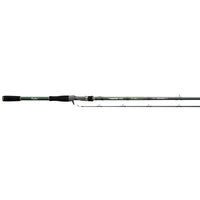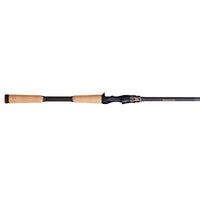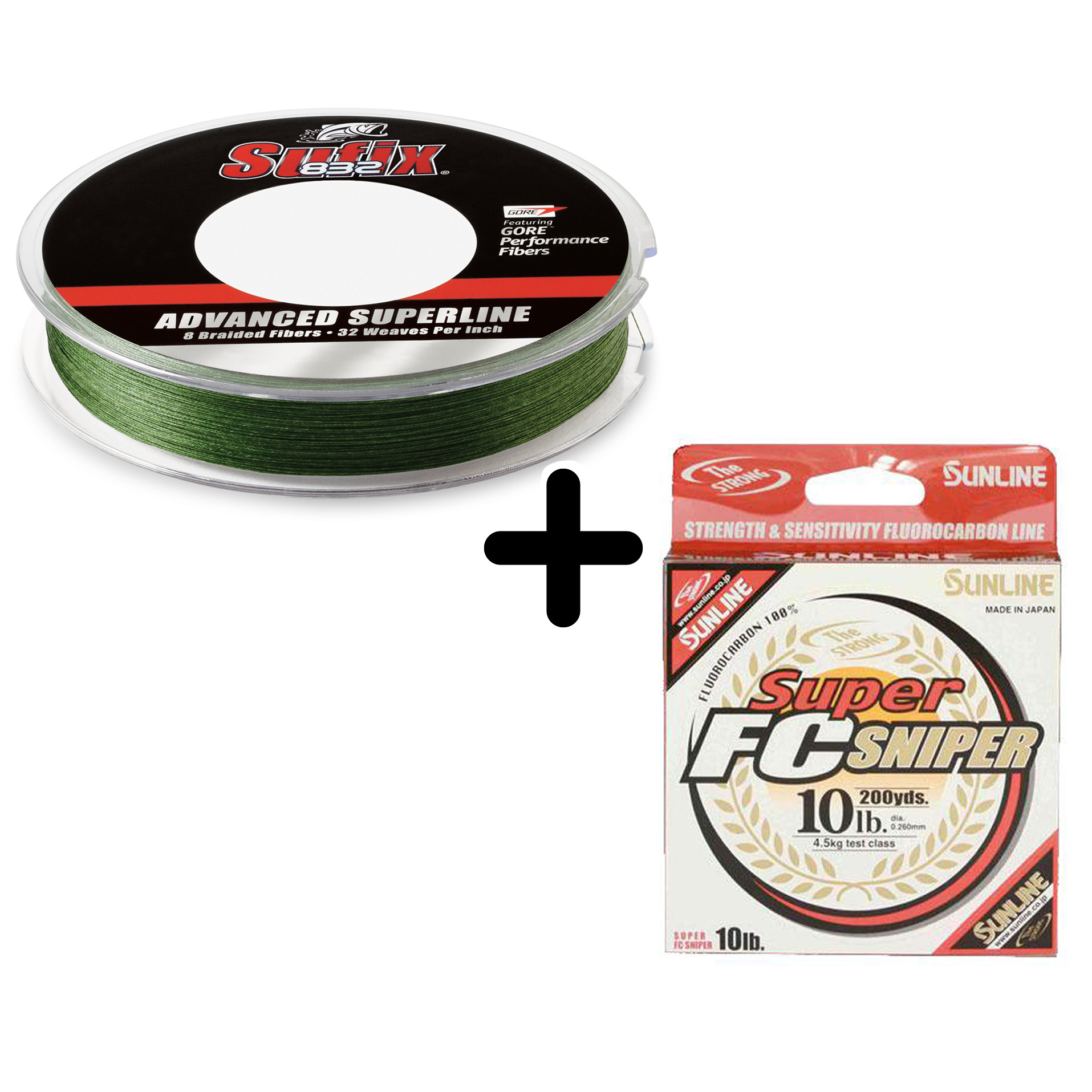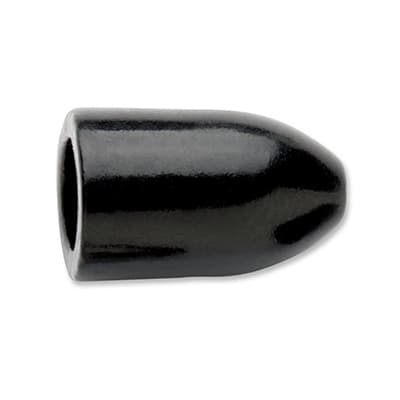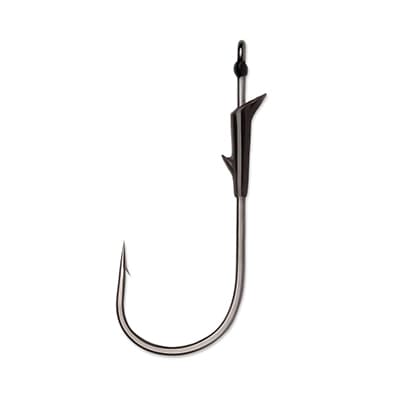All Featured Products

Shimano Bantam MGL A Casting Reel
$394.99
Jump to 3:42

Daiwa Tatula Elite Pitch Flip Casting Reel
$259.99
Jump to 4:11

Lew's Pro Skip & Pitch Speed Spool SLP Casting Reel
$219.99
Jump to 4:32

Seaguar InvizX 100% Fluorocarbon
$29.99 – $149.99
Jump to 7:28

6th Sense Peg-X Weight Stoppers
$1.99 – $9.99
Jump to 9:34

Owner Jungle Flipping Hook
$8.49
Jump to 10:28

Ichikawa Muscle Wide Gap Hook
$4.99
Jump to 10:58

Gamakatsu Ringed Superline EWG Hook
$5.99
Jump to 11:22

Owner Haymaker EWG Worm Hook
$6.49
Jump to 12:02

Reaction Innovations Sweet Beaver
$5.99
Jump to 12:52

Strike King Rage Bug
$7.99
Jump to 13:53

Big Bite Baits 4" Craw Tube
$4.99
Jump to 14:45
Video Transcript:
What's up everybody it's Polish Pete and I'm here in our studio in Golden Valley, Minnesota here at Omnia Fishing and this is Omnia's technique highlight of the week. That's right each week we're going to bring you a new technique or not necessarily new to the fishing world, just a different technique each week. We're going to break down the tackle you would need for it to do that technique and even maybe some ideal locations or places to go find to deploy the technique on your favorite body of water. If you're not familiar with Omnia Pro you want to go check that out because you can cross reference a lot of what we're saying here today and find areas that these techniques will key in on. We're going to start with a technique that's near and dear to my heart and that is Texas Rig Pitching and Flipping. I know it's kind of a weird way to put it but that's kind of how we deem it in our algorithm on our website is Texas Rig Pitching and Flipping. There's obviously different ways, different times you can deploy the Texas Rig actual you're text opposing a bait with the Texas Rig hook so this is the pitching and flipping variants. It's a very popular way to catch bass. There's a lot of different tackle that can be evolved in it but this is our way of simplifying for you and helping you out whether you're a beginner or you're trying to get into this more seriously for aspirational terminology or if you're a hardcore termin angler there's stuff in here for you as well. We'll start off with the rods. I would say kind of the newest trend you see in pitching and flipping Texas Rig style is going with a little bit lighter power rod. That is doing something like along the lines of this seven, three medium heavy fast action rod. This one here is a combat stick from Evergreen but this would be traditionally considered two lighter rod for that pitching and flipping application but just like jig fishing nowadays in the fishing world we're starting to downsize a little bit and use lighter weights, lighter terminal, lighter line, try and get more bites. That seven, three medium heavy is something in those lines. This isn't two and a couple hundred dollar rod you're getting on the water with a pretty nice flipping set up here but you're going to have to stick to lighter stuff and we'll touch on more of that later. But then you got what I would consider more of an all around pitching and flipping stick for Texas Rig and this is a Shimano X-Bride and a seven, six heavy. This is going to be more of a traditional flipping stick. It's got lots of power. It's long so it helps you clean up line fast. It gives you leverage to get fish out of some more heavy cover. This would be a more universal all around Texas Rig pitching and flipping rod because this would be your staple flipping stick size and length. Next up you go to the bougie stuff and the big high end stuff and this would be like a mega bass destroyer right here. This one here is the Jungle 7 rod. Very popular flipping stick for us here with your hard course but very expensive rod. You're up in that five hundred dollar plus class rod here but you're getting a seven, eleven heavy that weighs as much as a lot of this shorter smaller rod. So if you're in the market for a really big heavy duty flipping and pitching stick so this would be like punching heavy thick mats, fishing big reeds and vegetation or just for your offshore flipper and you want that extra length to pick up lots of line if you're flipping in deeper water maybe that's where this could be advantageous to you. Next up you want to look at the reels that you'd be targeting or using. What I big would recommend mostly when you're looking at reels for a flipping and pitching more than the handle length, the gear ratios which gear ratio will be important . You want a really fast reel for this. This is one of those times where you hear the manufacturers talk about oh this reel's got an aluminum frame. That's a big deal in this particular scenario. I don't want to reel with a graphite or carbon frame when you're pitching and flipping because you're putting so much pressure on the reel in close quarters that you'll actually feel the frames twist and bent. So I would say on the more popular end you're going to look at some like a Shim ano Bannum. These things feel like little tanks. Not heavy. I mean they're a little bit away there but these are solid metal and they feel like just straight bar stock and they feel really solid in hand. This is going to help you with your power and your confidence and recent fish out of heavy cover. Obviously Shimano gear in a nice beautiful drag in these is going to help you out as well and you're going to look for something in that higher gear ratio like an 8 -1-1 gear. You want to lower that price point and get down into something like the Tautula pitching flip here. This is a reel design specifically for that. You have less line capacity here because you're just spooling it up with some heavy line and you're fishing 20-30 feet away from the boat max. So big handles on it as you see you got some big oversized knobs and a 100mm handle on this and you're going to have up drag power too. So Looze also has a skipping pitch reel that I'm very familiar with. I actually own a few of them myself. Very similar thought to this big handle shallower spool. You don't need to spend the big huge bucks to get a reel to do this. It is nice though. Obviously that bandum is a beautiful reel and popular for a reason. So if you're a hardcore pitcher flipper it might be worth it to jump up there or otherwise if you're looking for a whole bunch of them you can't float with the big money. These are two great options for your reels for the Texas rig flipping and pitching. Next up we'll look at the line that you would put on that reel. So there's obviously multiple schools of thought. If you want to be very versatile, if you're new to flipping and pitching with the Texas rig. I recommend starting off using straight braid. This is 50 pound max quatcher here from PowerPro. Very popular line for us here at Omnia. This is 50 pounds of great size. It's not too thick that you can't fish it straight braid. I honestly will tell you. I think you might miss out on some bites. You're going to get with that straight floral or a floral leader presentation. But don't overcomplicate it while you're getting going. Get confident. Actually put that weight and that bait in places that you really don't think you should at the time. You can find yourself finding bass, getting themselves in service of gnarly cover. This straight braid presentation will give you not only confidence in getting the fish in the boat, but you'll get confidence in just your flipping style as a whole. The different baits, all that, you can feel a lot more. You can feel with that bottom contact or that bottom composition is a lot more. You're going to look for a lot of times more hard bottom. A lot of times your vegetation will canopy and the most key areas that you'll be flipping and pitching will have hard bottom. Using that pro app to find yourself maybe some key areas that might be a little bit more conducive to flipping. If you find some vegetation mixed with hard bottom, man, you're in a key spot to go flipping and pitching. Like I said, don't overcomplicate it at first. Just go straight braid. Next up, we got another braid line here, but we bumped this way down in power. This is down to that 30-pound braid. This is typically for somebody that's going to be doing a leader or wants that versatility of putting a leader on, which is new these days. Typically, it'd be either a straight fluorocarbon flipper or a straight braid flipper. I would tell you, most pros I know still do one or the other, but there is a growing contingency of people that are using both together. I like to have braided line on that's strong enough that I could fish straight if I needed to, but if I want to put a leader on, if I think he's going to help me get a bite or two throughout the day, I can do that. That's where 30-pound braid with a 20-pound leader, they're not small enough, so it'll slide through your guides with these. I never have any problems with that stuff anymore, and that's my confidence way to do it. Like I said, if you're new to this, don't over-complicate it. Go with some big 50-pound braid and just go fishing. If not, if you're on a really clear body of water, if you look at your pro map and you see that your body of water, your target is insanely clear, you might want to try straight fluoroc for that body of water as well. But if you get good at that line-to-line connections, that's why I still think this is the best of both worlds. You're on 30-pound braid and have a leader material with you if you need it. Next up is some weights. You're going to want to have a variety of different weights in your Texas rig, pitching and flipping. This is a quarter-ounce weight here. Here you see a 3A, such as getting more and more popular like this size in between her, and then you go all the way up to like a three-quarter-ounce weight, which is beyond a bigger side. Obviously, there's bigger weights than this, even smaller weights than this. But these are three weights I think that you can help yourself gain a lot of confidence. That quarter is almost a weightless presentation, more finesse, heavy pressure situation, sparse vegetation. We are not around a bunch of thick heavy cover. Try it with a really light weight. I tend to get more bites of the lighter weight anyway. Actually, the big weight comes in as when the vegetation is so dense I can't get to the bottom. It's also a great way to fish faster. If you're new to this technique and you're covering water and you're trying to find those key areas, if you're using your pro map and you're looking at your contours and you see a flat and you know that there's vegetation present and you need to get this vast area to cover. When you go to a three-quarter-ounce weight, you can constantly keep bottom contact, feel around, get those bites, shake them off if you want, if you're pre-fishing for a tournament, or set the hook on them and have some fun, which is much fun. But you can move faster with a bigger weight. That's always the way I looked at it. When I would find in a key area, I usually have a big weight on and then I would go back at those fish again with maybe a lighter weight and see if I can get some fish. Maybe a little higher up in the water column or a little bit more finicky bit ers. Make sure you have a variety of different weight sizes with you. Next up is going to be a peg. You're going to need some sort of peg stopper when you're flipping a pitch in the Texas rig style. Now, back in the day, this wasn't very popular. They would let the weight slide free. I'm running out of reasons why that really is advantageous to me unless I'm going to with weights like quarter ounce and down from there. What I've found a lot of areas I'm fishing, that bigger weight will still make the bait kind of crash down and the weight might penetrate a little bit further into the bottom than I might want it. But that could be a reason for you to move your bobber stop up the line and give your bait a little bit more free fall in action, depending on the bait that you're flipping. It's always advantageous to have these width because if you want that extra separation for your weight being able to move away from your bait, you can just pull it up the line a little bit more away or you can pin it down tight and keep them together. I tend to do that more than anything, but you're definitely going to want to get your bobber stoppers. Next up would be hooks. There's three real definitive families of hooks for your Texas rig flipping and pitching. That's going to be your EWG style hooks. This is a very common hook. This is always my confidence hook, this style of hook. This one here is from Michi Kaul and their muscle hook line. But the hot thing nowadays has been for a while and most of your hardcore Texas rig flipping pitchers love the straight shank flipping hooks. This is a hook designed specifically for this technique with a straight shank and you're burying that hook point in the bait and you're using that leverage of that straight shank to just pin the fish right in the top of the mouth. I do on math or on paper see why this would be the best option and a lot of my friends that are better at this technique have found their confidence in these hooks. And I understand why. However, I tend to see you find myself boating more fish and getting better hookups with the EWG style hook where I miss out to the straight shanker in my opinion is I don't hook as many fish. I don't get to capitalize on as many bites. I get a lot more short strikes and missed fish with this style hook. Hence why the straight shank tends to be a more popular one for a lot of other people. What you saw up here in the Midwest, you're really popularized by our one early Seth fighter there, but a lot of us have been running these for a long, long time. That's your ring style EWG. And this offers you some more takes away more leverage from the fish. You got a free swinging hook here on a solid metal ring. It allows some freedom when the bait is falling like that. But to me, it's all about landing percentage of these. You're hooking fish in really deep thick cover, especially really mean ones that get take you through and cut up a ton of vegetation. I always found this to be a confidence style hook for me. So there's just a weird one to throw out for you. And lastly, I have to touch on this one because this is all the craze around here. And I'm the fishing right now. That is a mix between the straight shank and the traditional EWG. That is the new owner haymaker. You might say to yourself, that looks just like an EWG. It does kind of look just like an EWG. And if you look, the hook point here is opened up and out. So I'm still, I've been fishing with these for actually the last couple of weeks. I'm falling in love with this hook and I mean it. The hook point is more like a straight shank in the bait. You have to bury it inside the bait. You can't skin hook it on top. It's going to grab vegetation. You're burying it in there, letting that point trusting that that point is going to come through that plastic and hook that fish. And let me tell you so far, 10 out of 10. So if you're confused by all this, see if you can get your hands on these. They're hard to get, but this is a really cool hook right here. Lastly, we got to touch on the baits for the Texas rig flipping pitch. And that would be three styles of baits that I think you've got to have if you 're going to get into this technique. That would be starting off with your creature style bait. This is the sweet beaver from reaction innovations. This is an OG bait. That's really good. If you notice the appendages on here, they're stuck together currently. I'm not going to rip them apart right now, but you can pull these apart if you want to touch more action. But this is very action lists, I would say. It's a little bit to it, but it's a very subtle bait. It's a very subtle presentation. Definitely gets a lot of bites, but I think it's going to shine in your more pressured situations and your cooler water presentations. If you're losing water temp or if you're really still cold coming out of those winter months in the spring, pre-spawn style, what it's really cold and fish are lethargic, you don't want all that action in your lure. That's where this type of bait can really shine. So it's a great one to have in your boat with you all year round because it's not just for those cooler water temps. Even in the summer, if you've got an area on a lake that's being pounded and you see there's tons of pressure on it, this could be a bait to go in there and get bites from fish that are a little bit more wary and kind of caught on to what's going on with all these big bombs getting dropped on their heads. Next up would be the complete opposite of that and that's where you go with your rage bug. This is another confidence bait for this guy right here. I love these things. They kick like crazy. They have four appendages that'll actually kick in the water column. So this is going to shine when your water temps are starting to rise a little bit or stabilize in summertime temps. You have warm water temps and you're looking for reaction bites and more actively feeding fish. This is where this can really shine. I even like it just in the pre-spawn where you're still cool or waters but they 're at least trending in that warmer condition. That's when you start seeing a lot of your moving baits really, really pay off. So now you're taking that Texas rig presentation which seems like it's a slow presentation and a spot on the spot type presentation and I can cover more water with this. I can take that big weight like I spoke about before and move fast and fish and look for reaction bites as I cover a body of water and look for certain water conditions on the body of water. Lastly you got to touch on this one because not just the craw tube which everybody knows is a Midwest staple here but also the claws are tubes in general. They have a much different presentation than the other two I touched on. Some would say action list but it actually, yeah the appendages don't do much for you. Maybe just show a little bit of life likeness to them but it's the way they fall. They fall more like a jig. So you flip them into the cover. It's not falling straight down like a like a the rage bug, whatever the beaver would fall. This is falling more like a jig as it falls down to the water cone. So it's almost like fishing a jig which has a high hookup rate to it, a high percentage landing rate to it but using it with Texas rig so places your jigs just going to be inefficient. If you're trying to pick the vegetation off your jig or fight that jig and thick veiny vegetative or you know really thick, viney vegetation where it's really hard to get that jig through. This can be really, really effective so your coontails and hydrillas, milfoil especially. That's really where this bait shines but different bait there. Any kind of tube, not just the craw too which is a staple like I said but any kind of tube can be a different presentation that you're going to want to have added to your arsenal of Texas rig flipping and pitching baits. So stay tuned. This week we'll have more highlighted techniques from us here at OmniaFishing. com. (upbeat music)

